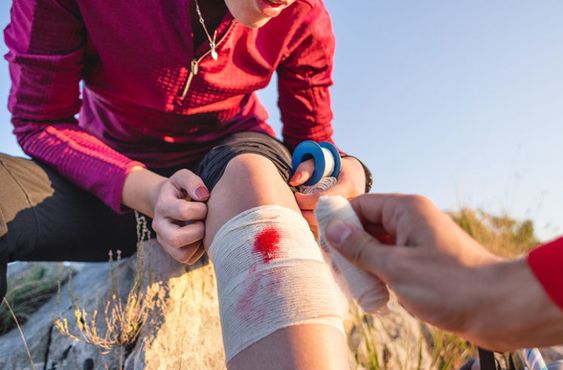Introduction:
Sports are a great way to stay active, healthy and have fun. However, they also come with inherent risks, and injuries are not uncommon. While some injuries may be minor, others can be more severe and require immediate medical attention. One of the most common types of sports injuries are wounds, ranging from minor cuts and scrapes to deep lacerations and puncture wounds. Knowing how to properly care for a wound can prevent infection, promote healing, and get you back in the game as soon as possible.

Whether you're a seasoned athlete or a weekend warrior, understanding basic wound care is essential. This comprehensive guide will provide valuable tips and insights on how to properly care for sports injuries. We will discuss the different types of wounds, step-by-step wound care techniques, and when to seek professional medical help.
Identifying Different Types of Wounds:
Before administering any wound care, it is crucial to identify the type of wound you're dealing with. Common sports-related wounds include:
- Abrasions: These are superficial wounds caused by skin rubbing against a rough surface, resulting in scrapes or grazes.
- Lacerations: Lacerations are deeper cuts or tears in the skin that often occur from sharp objects or impact.
- Puncture Wounds: These are small but deep wounds caused by a pointed object penetrating the skin. They carry a higher risk of infection due to the depth of the wound.
- Avulsions: Avulsions happen when a portion of skin or tissue is partially or completely torn away from the body.
Step-by-Step Wound Care:
1. Control Bleeding: Apply gentle pressure to the wound using a clean cloth or sterile gauze. Elevate the injured area if possible.
2. Clean the Wound: Once bleeding is controlled, rinse the wound thoroughly with clean water to remove debris and dirt. Avoid using hydrogen peroxide or rubbing alcohol, as these can damage healthy tissue.
3. Apply Antibiotic Ointment: After cleaning, apply a thin layer of antibiotic ointment to the wound to prevent infection.
4. Dress the Wound: Cover the wound with a sterile bandage or dressing to protect it from further injury and contamination.
5. Keep it Clean and Dry: Change the dressing daily or whenever it becomes wet or dirty. Keep the wound clean and dry to promote healing.
6. Watch for Signs of Infection: Be vigilant for signs of infection, such as increased pain, redness, swelling, warmth, pus discharge, or fever. Seek immediate medical attention if you suspect an infection.
When to Seek Medical Attention:
While many minor sports injuries can be treated at home, some situations require professional medical care. Seek immediate medical attention if:
- Bleeding is heavy or uncontrollable.
- The wound is deep, gaping open, or shows bone or tendons.
- There are signs of infection.
- You have concerns about tetanus vaccination status.
- The wound is not healing properly after a few days of home care.





